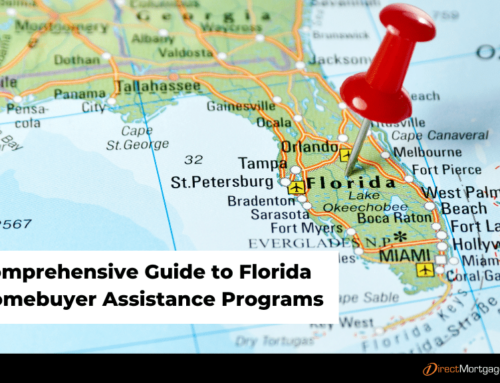Creating a monthly home budget is crucial to achieving your financial goals. A monthly home budget compares and tracks your income and expenses. This allows you to plan how much you could spend or save each month. Check out some of our budgeting tips to help you start saving for your dream home today!
Set a Financial Goal
Start off by setting a realistic short-term or long-term goal. Create a budget that will allow you to save for your home’s down payment, while giving wiggle room for unexpected expenses.
- Note: There are a variety of mortgage programs with varying down payment requirements. Before you discredit yourself, contact a team member! You may need less funds than you think, and/or there could be a down payment assistance program that could benefit you.
Gather Financial Paperwork
Gather all financial statements, credit card bills, paystubs, etc. This will help determine how much money is coming in and out of your account each month, and will help you better understand your finances.
Calculate Monthly Total Income & Expenses
Calculate how much you can expect from your monthly income by using the net income on your paycheck. Create a list of all mandatory expenses such as rent, car payments and insurance. Similarly, create a list of all non-essential expenses like streaming services, memberships, and miscellaneous items.
Adjust your Expenses
This step allows you to determine if you are living within your income or overspending. Adjust your expenses to match your income so you can save for your financial goals. We recommend trying to adjust expenses from your non-essential list and to set realistic budgeting goals.
Choose a Budgeting Method
Finding a budgeting method that works for you is key to saving. According to Penny Hoarder, there are several budgeting methods to consider:
- The Envelope System: Place cash in pre-labeled envelopes to curb excessive spending on debit and credit cards. Note: While this is an option for budgeting, remember to deposit into your bank account regularly. When buying a home, your mortgage team will need documented proof of funds.
- The 50/20/30 Method: Apply 50% of your income to living expenses, 20% towards savings and debt repayment, and 30% to everything that you might want. This budgeting method is suggested for someone who is more financially flexible.
- The Zero-Based Budget: Budget for all your bills and expenses and use the remainder of your income to reach your financial goals. This budgeting method is a strict system suggested for people trying to pay off debt as fast as possible.
Follow Through
The hardest part of budgeting is following through. You should review and adjust your budget as needed. Try setting a date on your calendar to review your budget and finances each month so you do not forget about it.
Creating a realistic budget that works for you is key to saving for a down payment on a home. Download the Monthly Home Budget Template to start your budgeting journey today!





